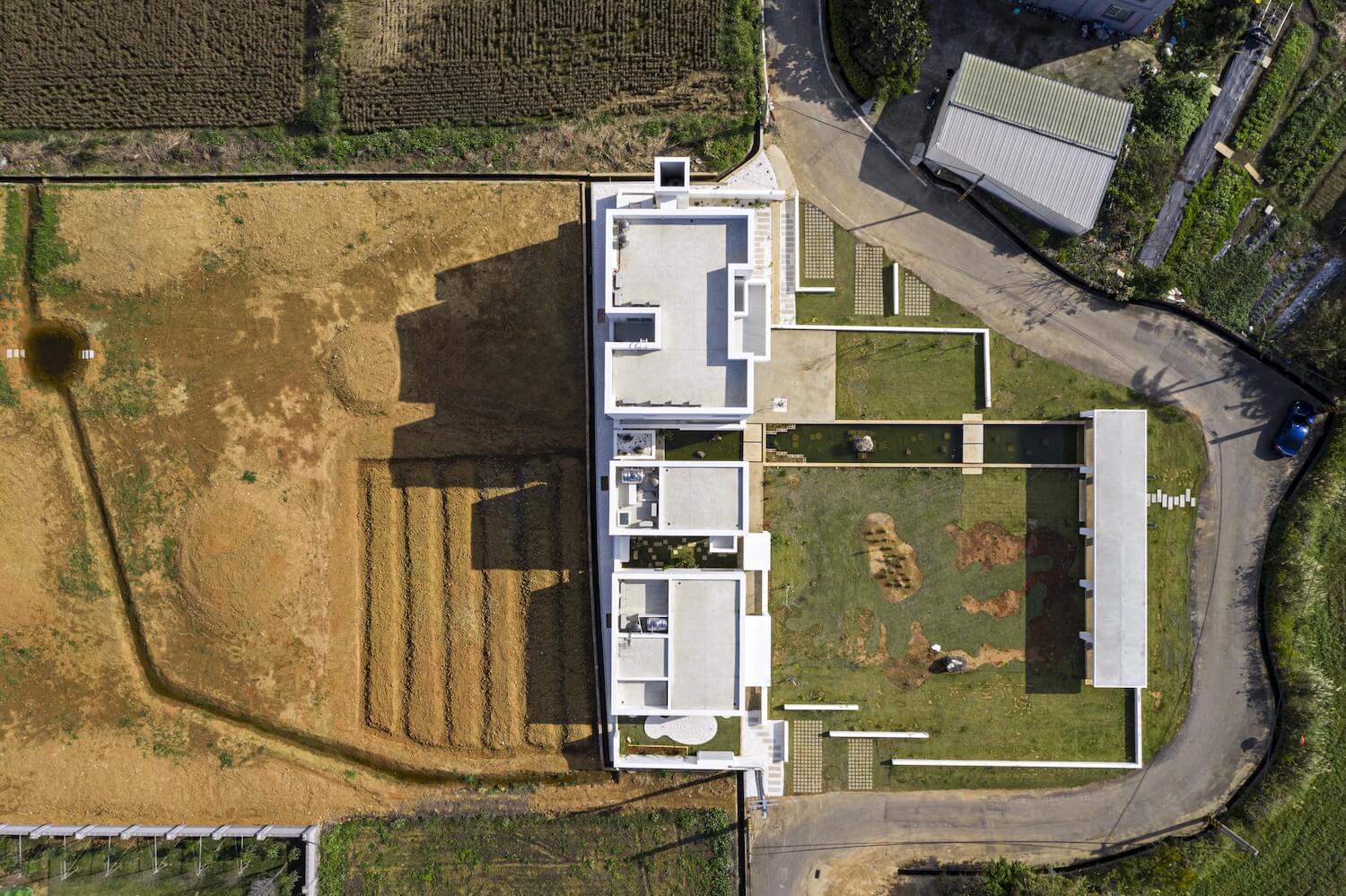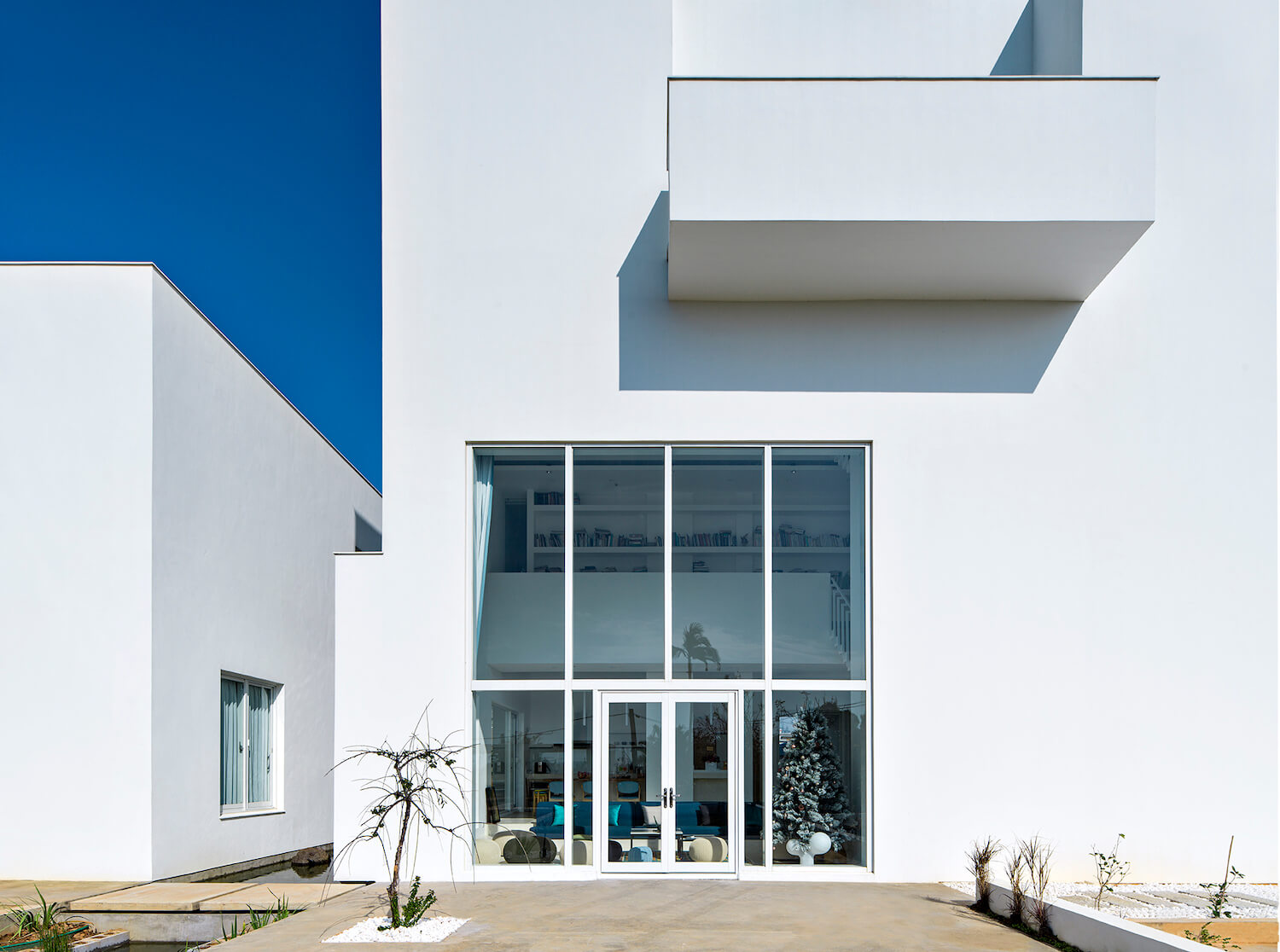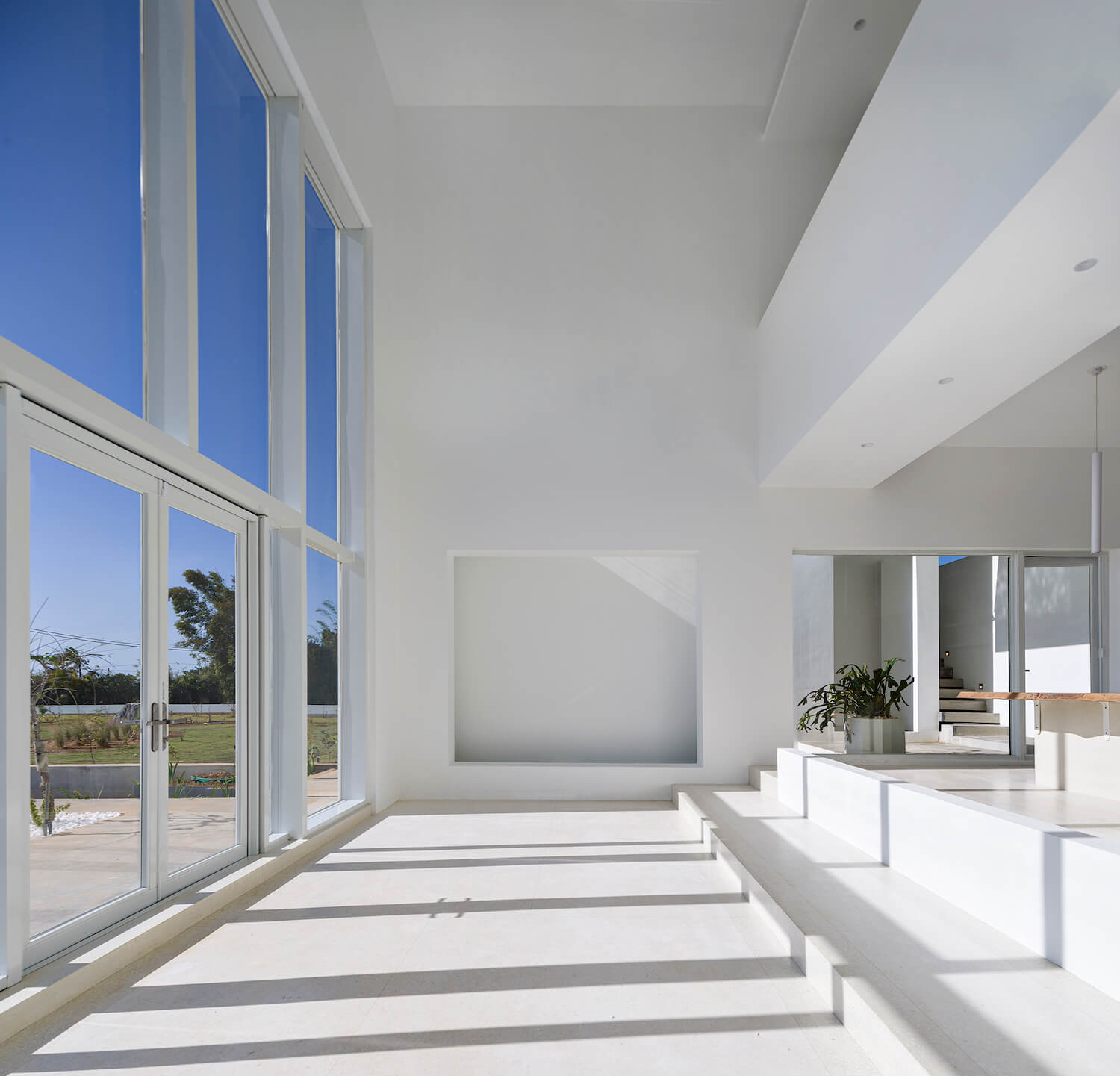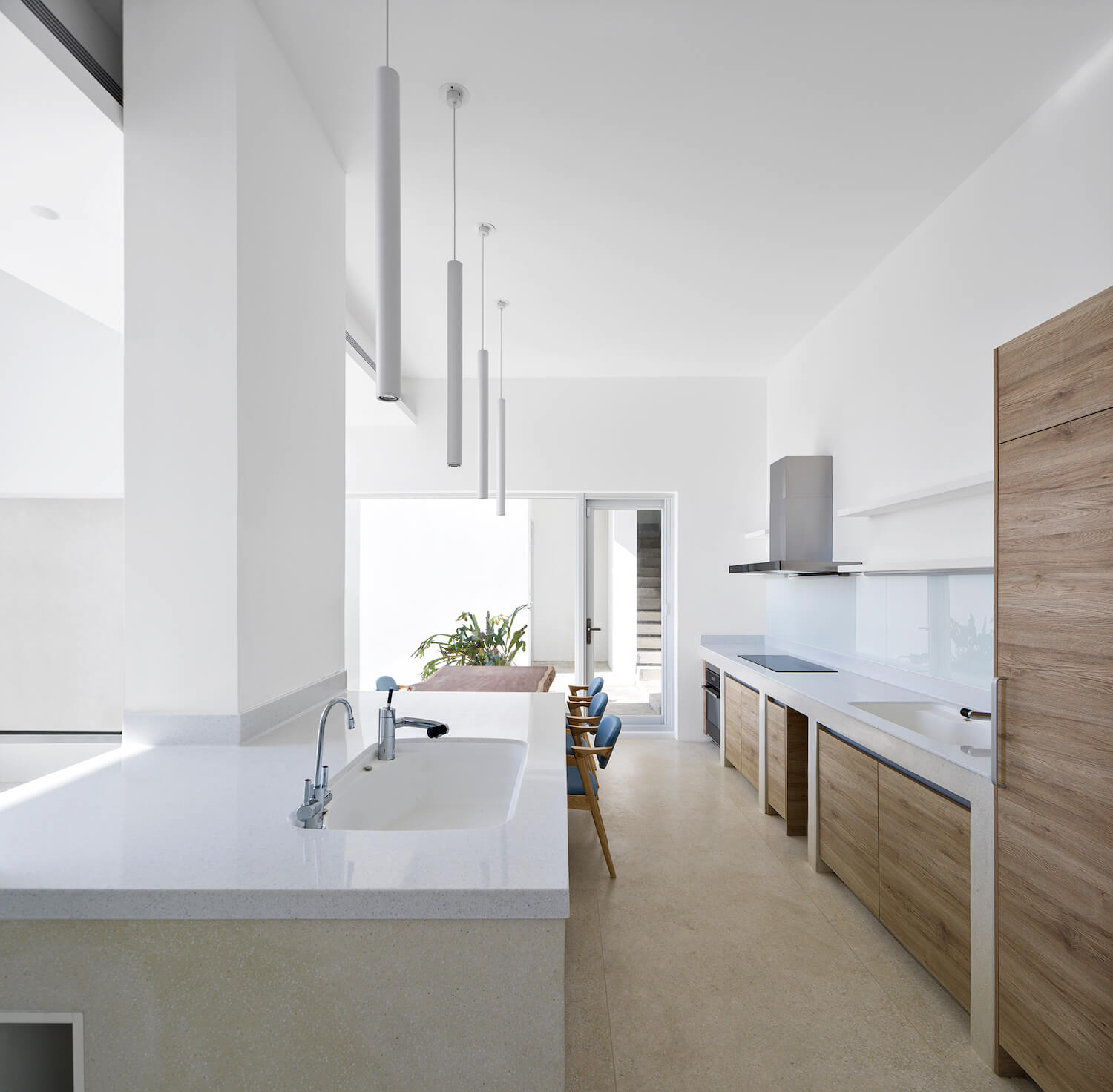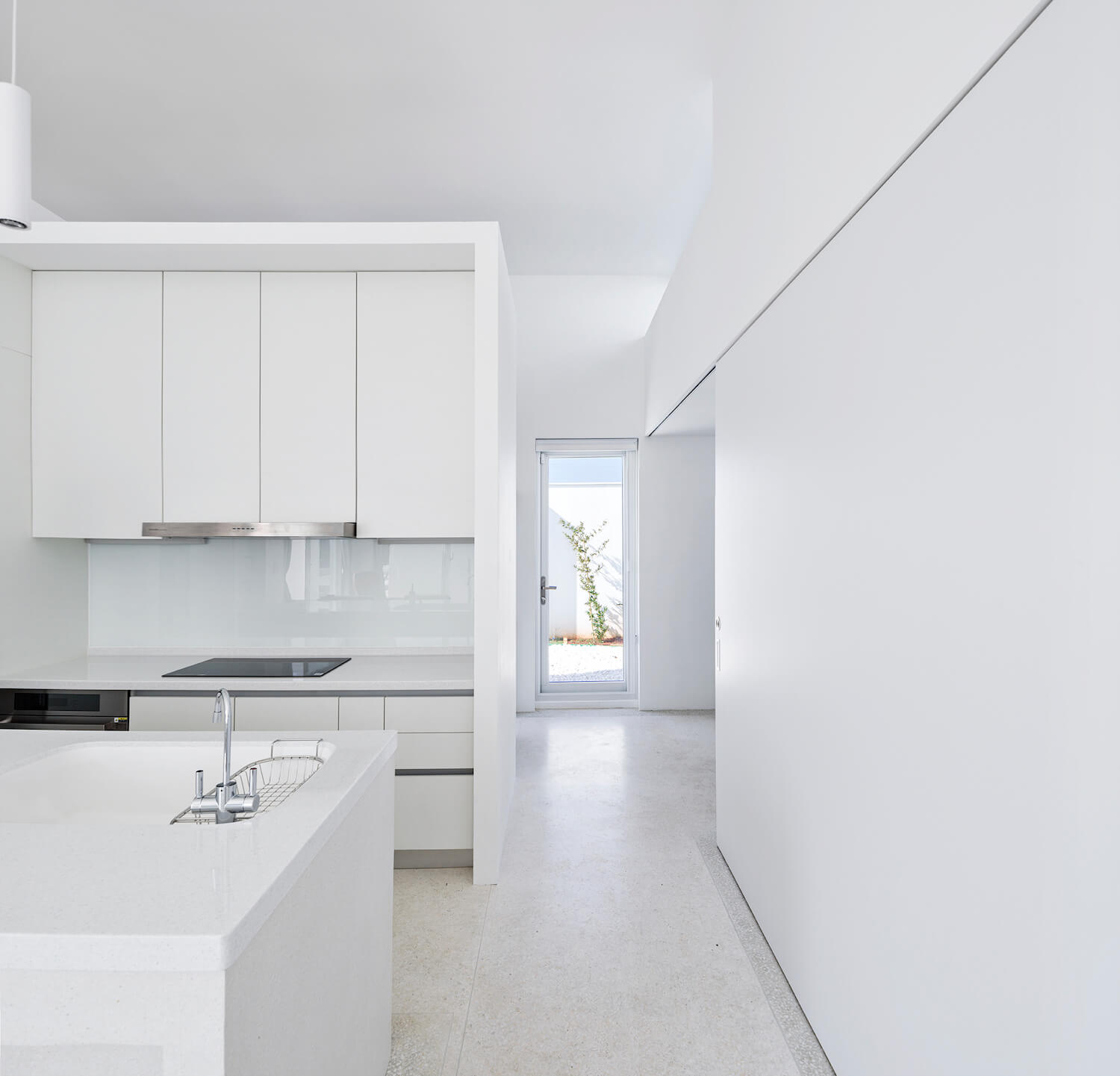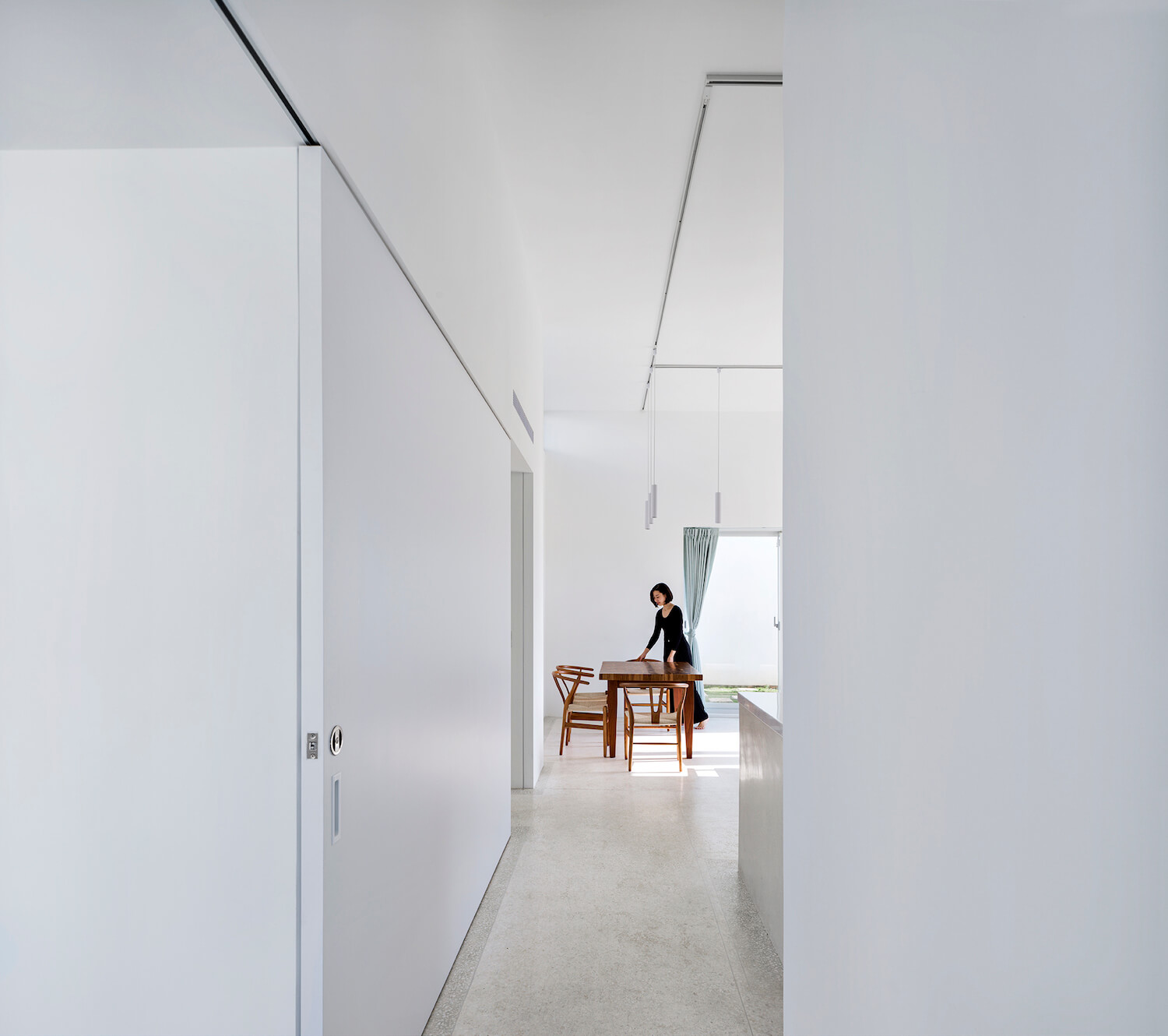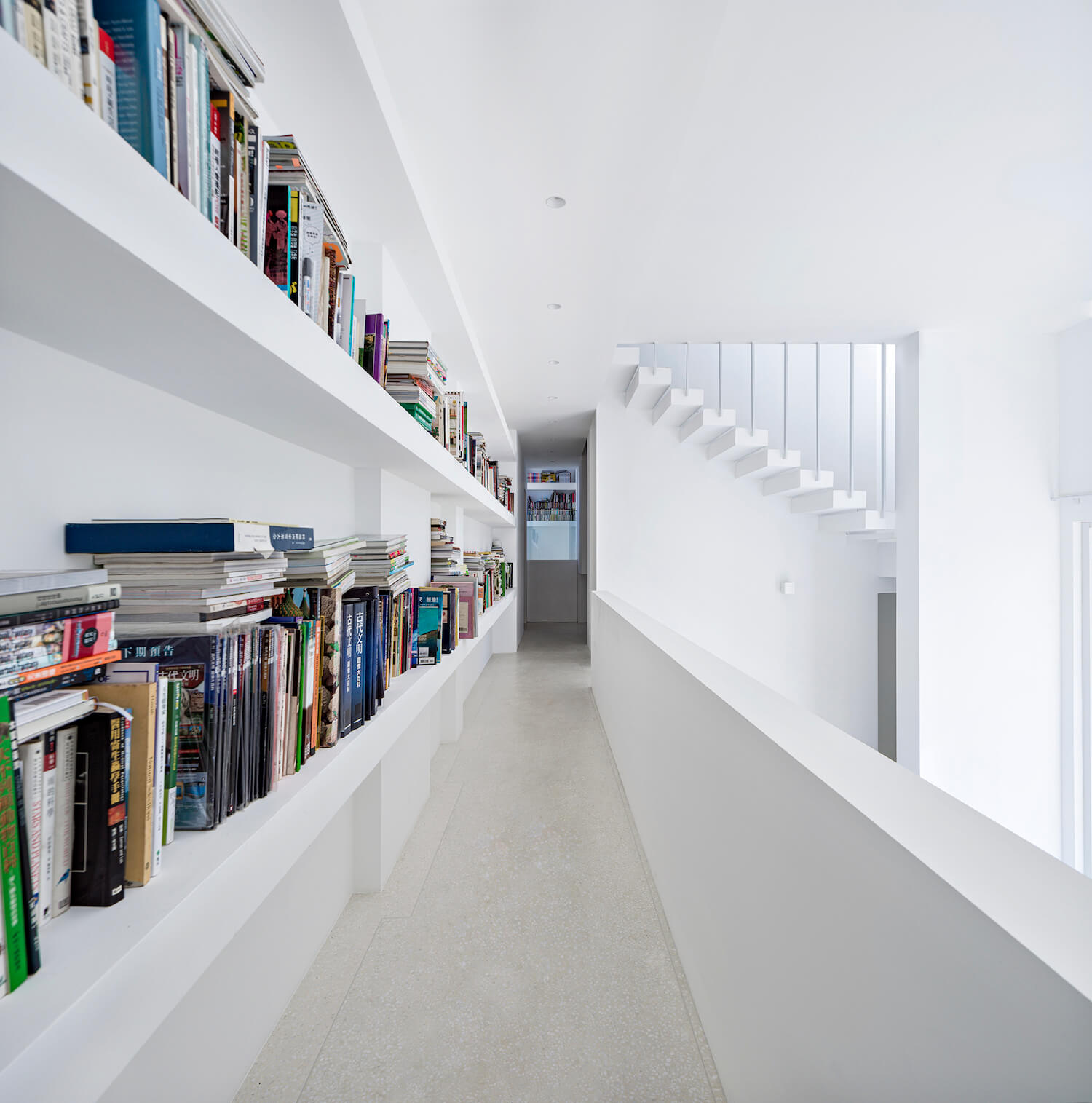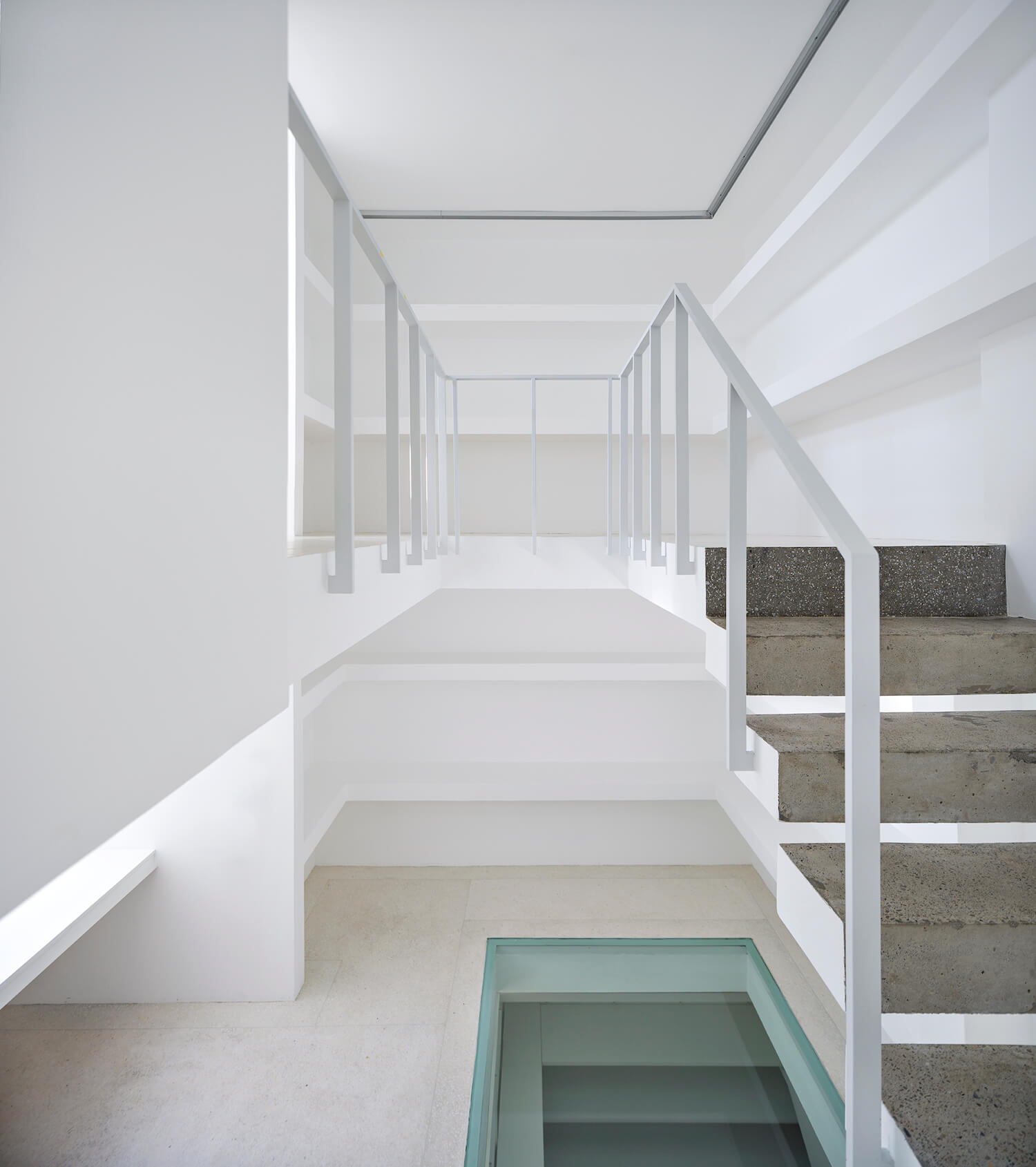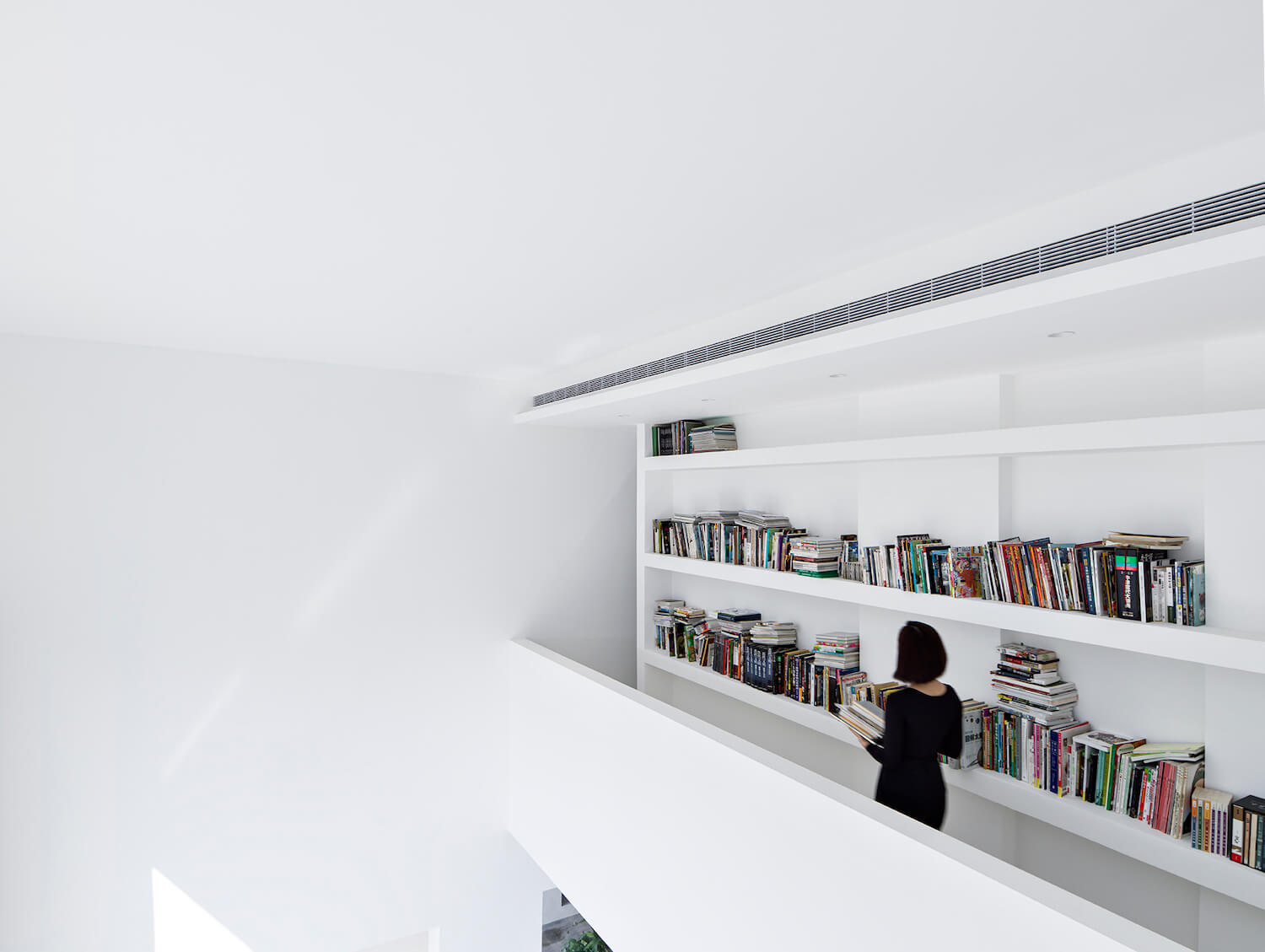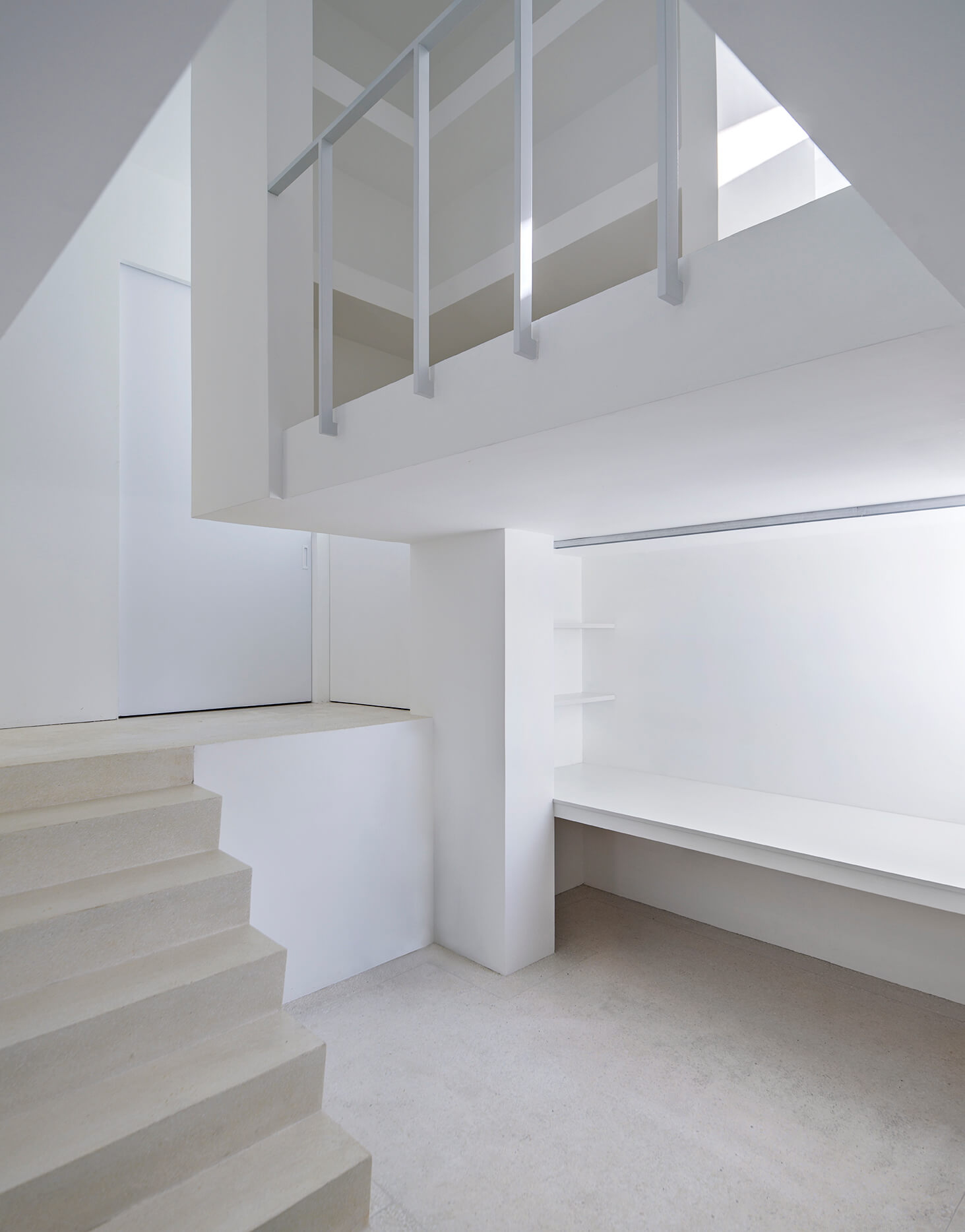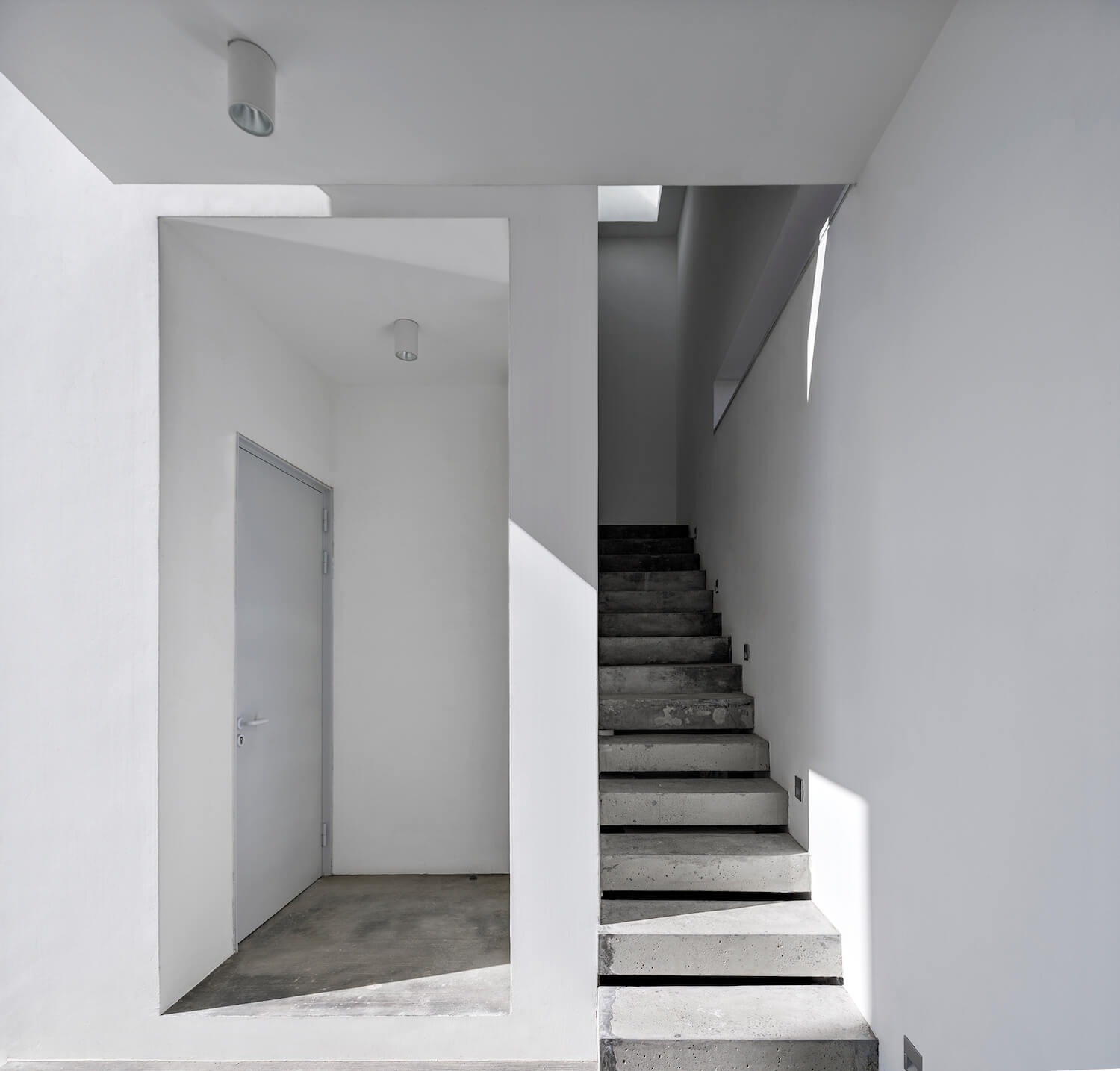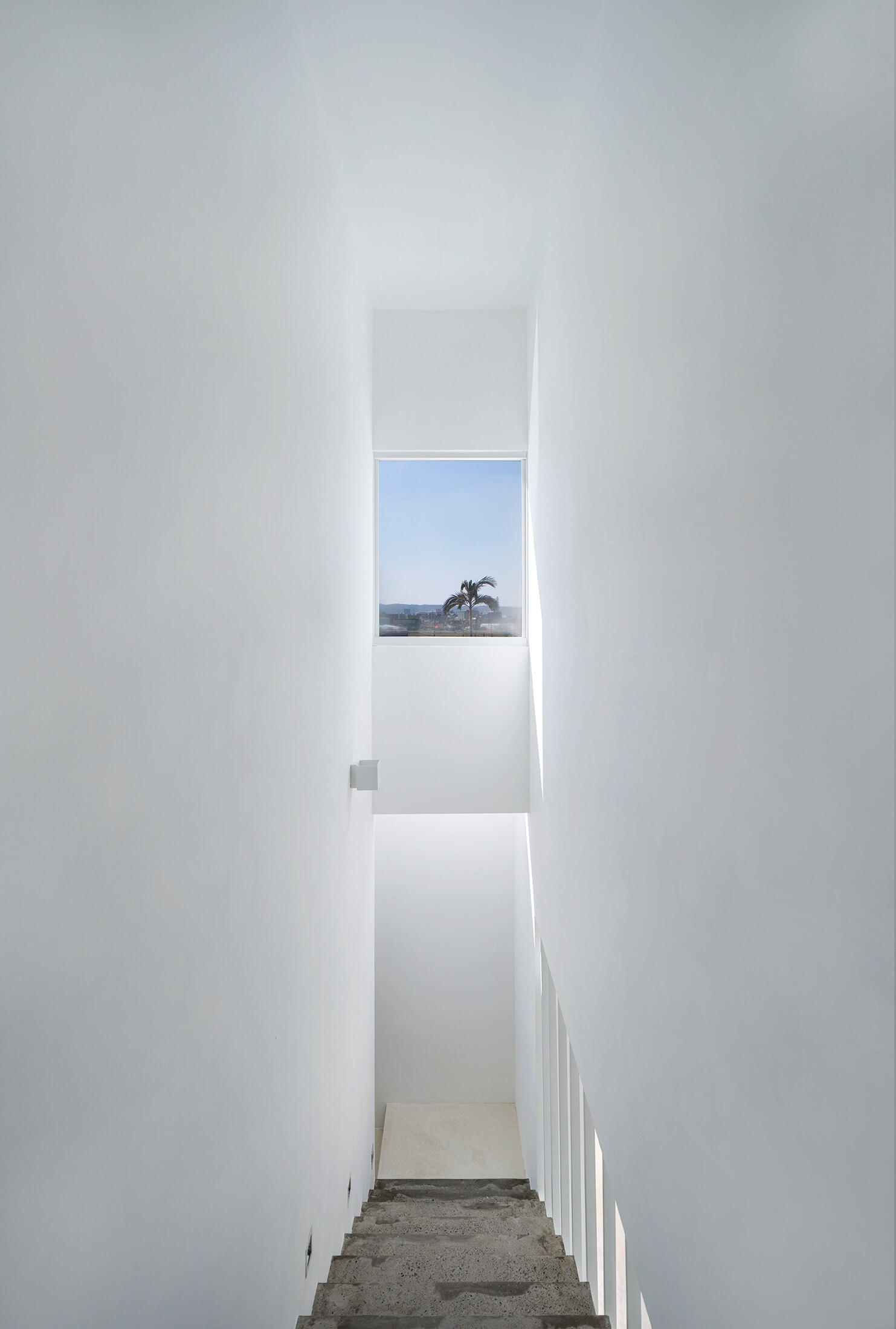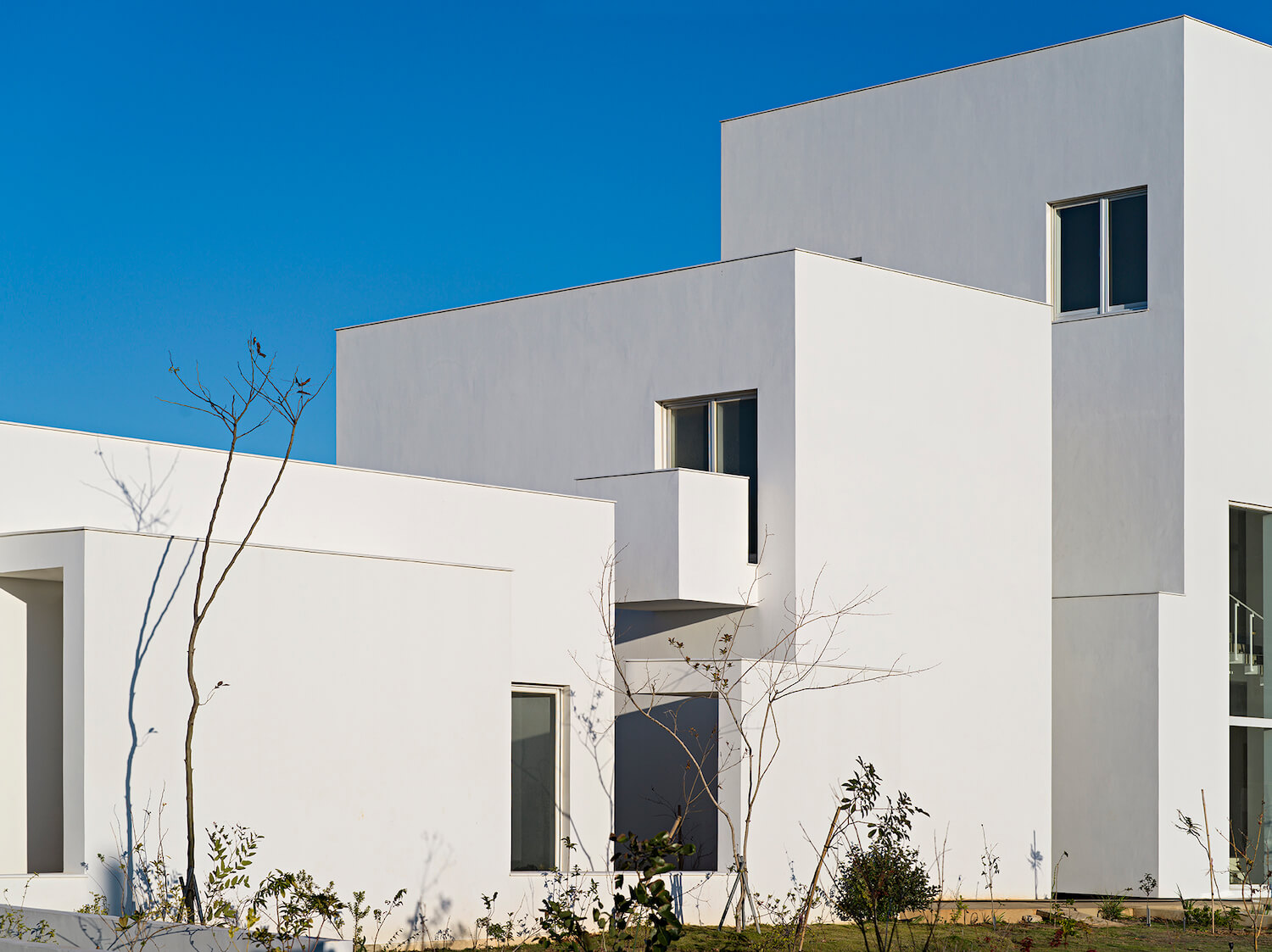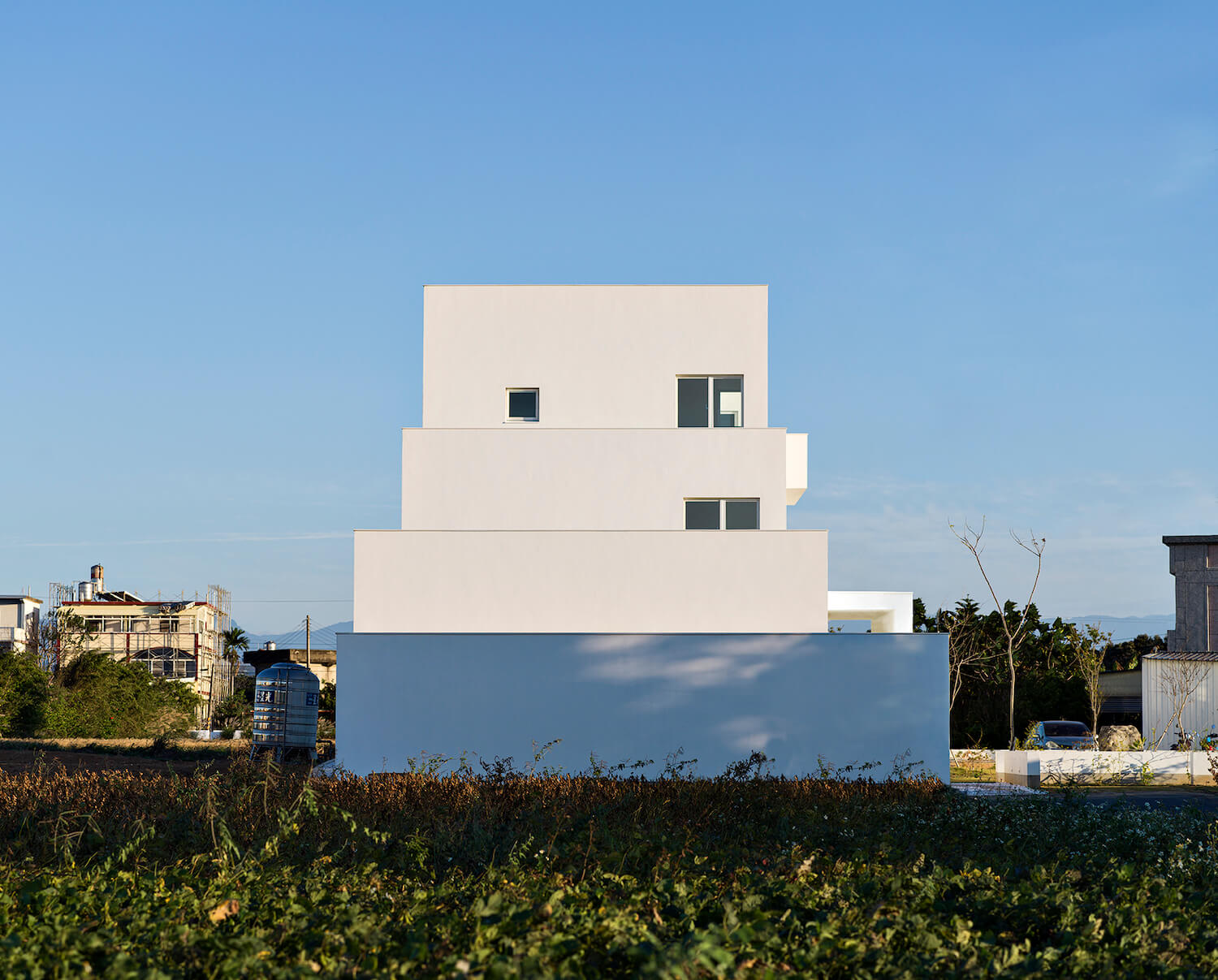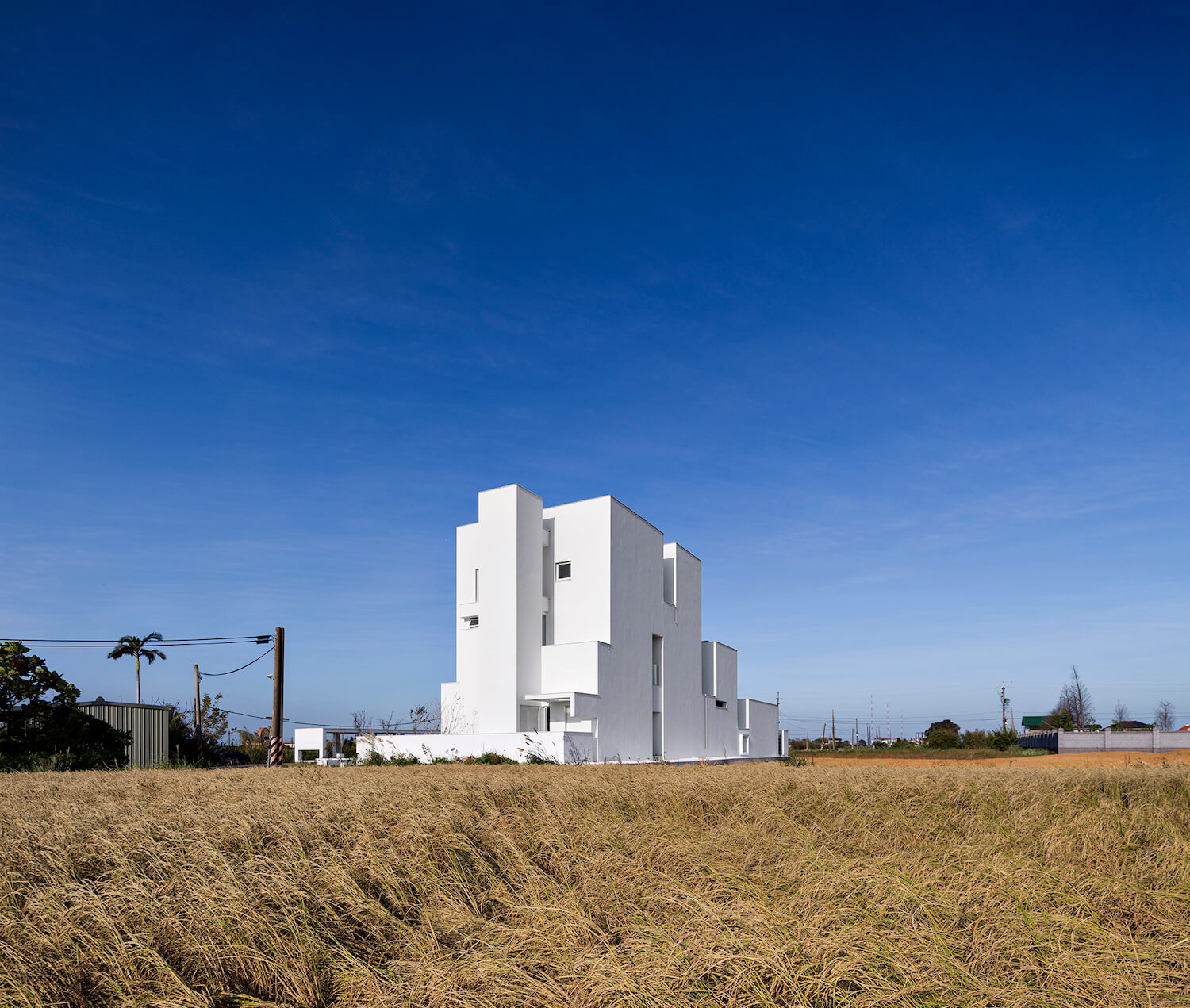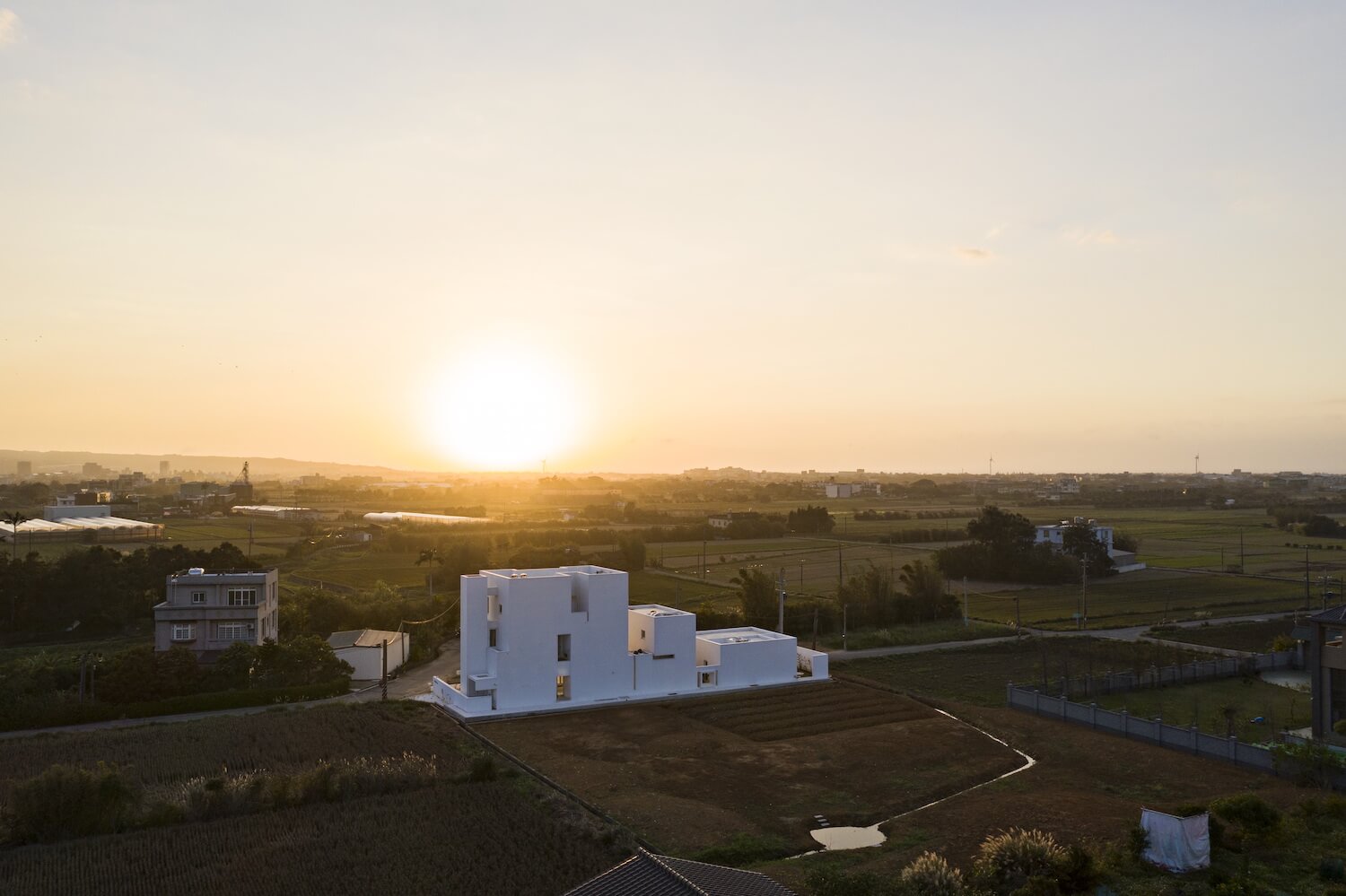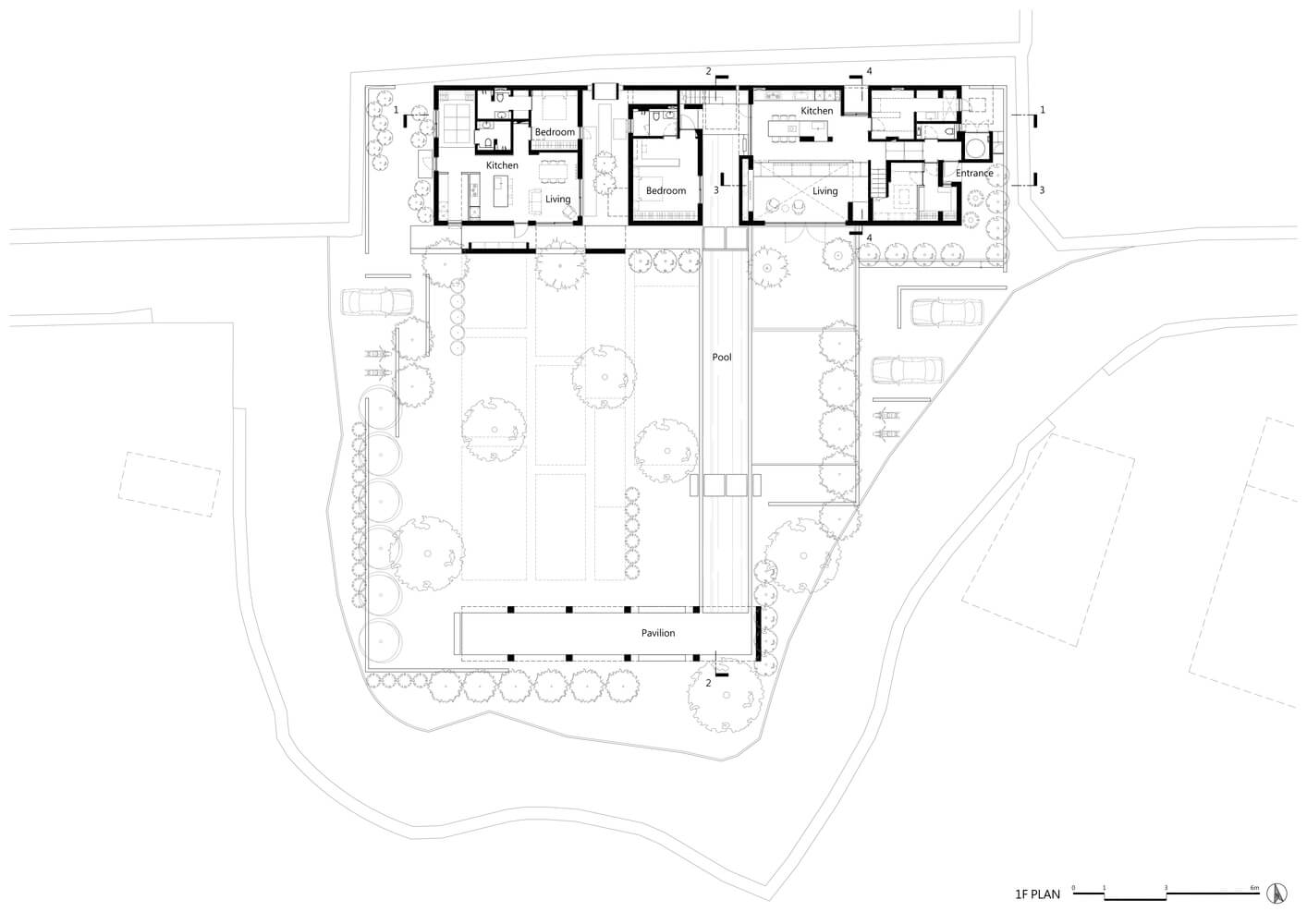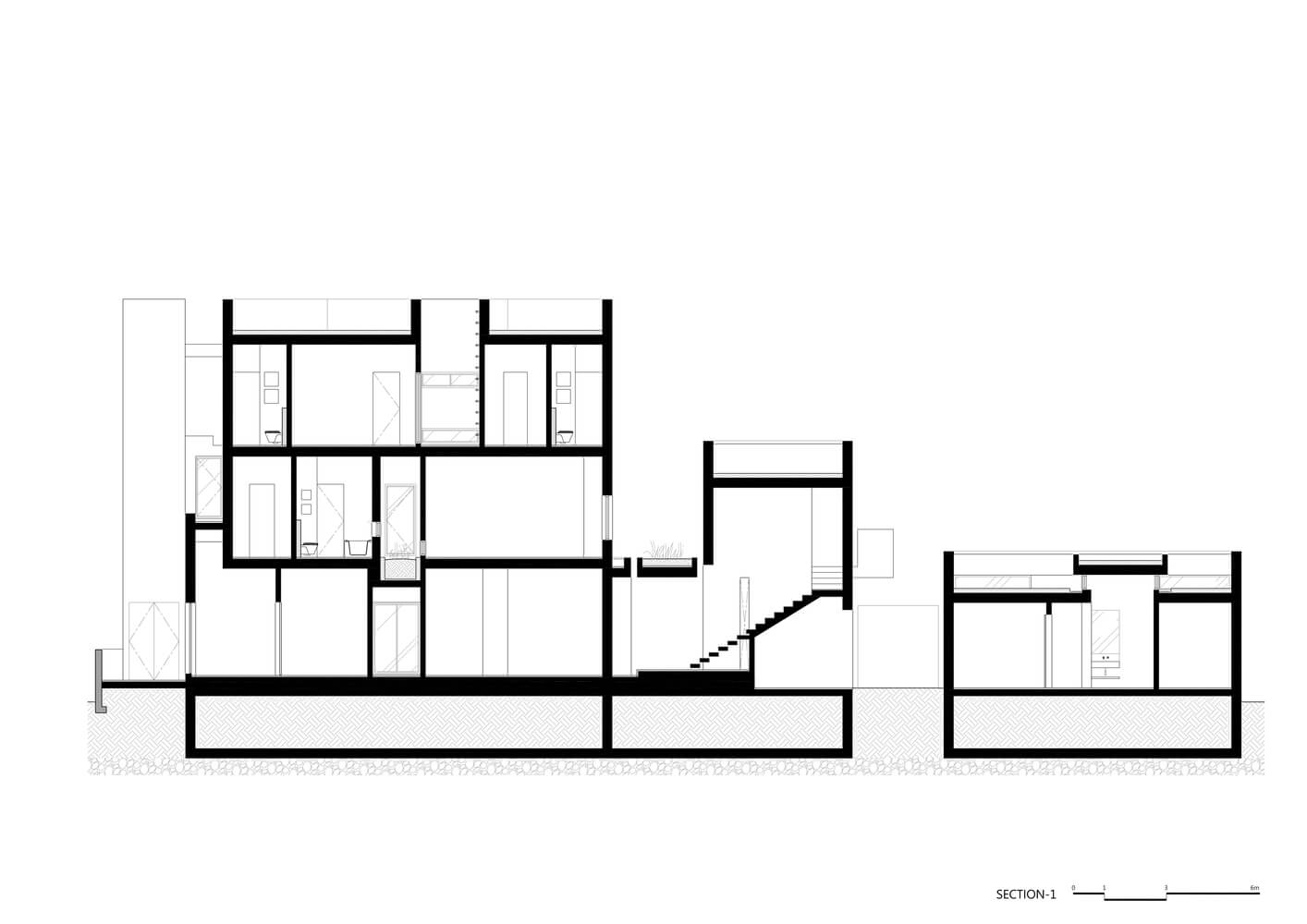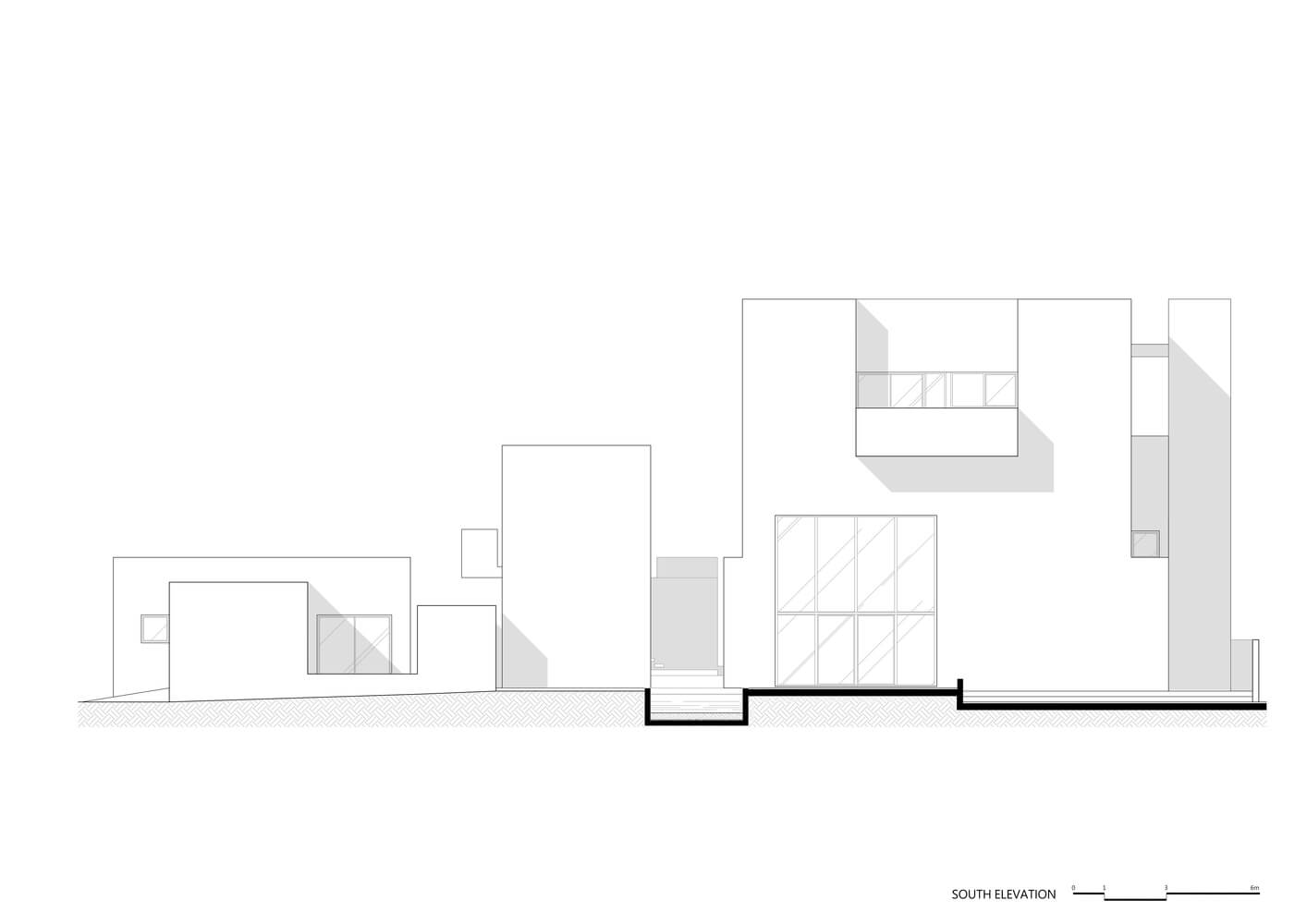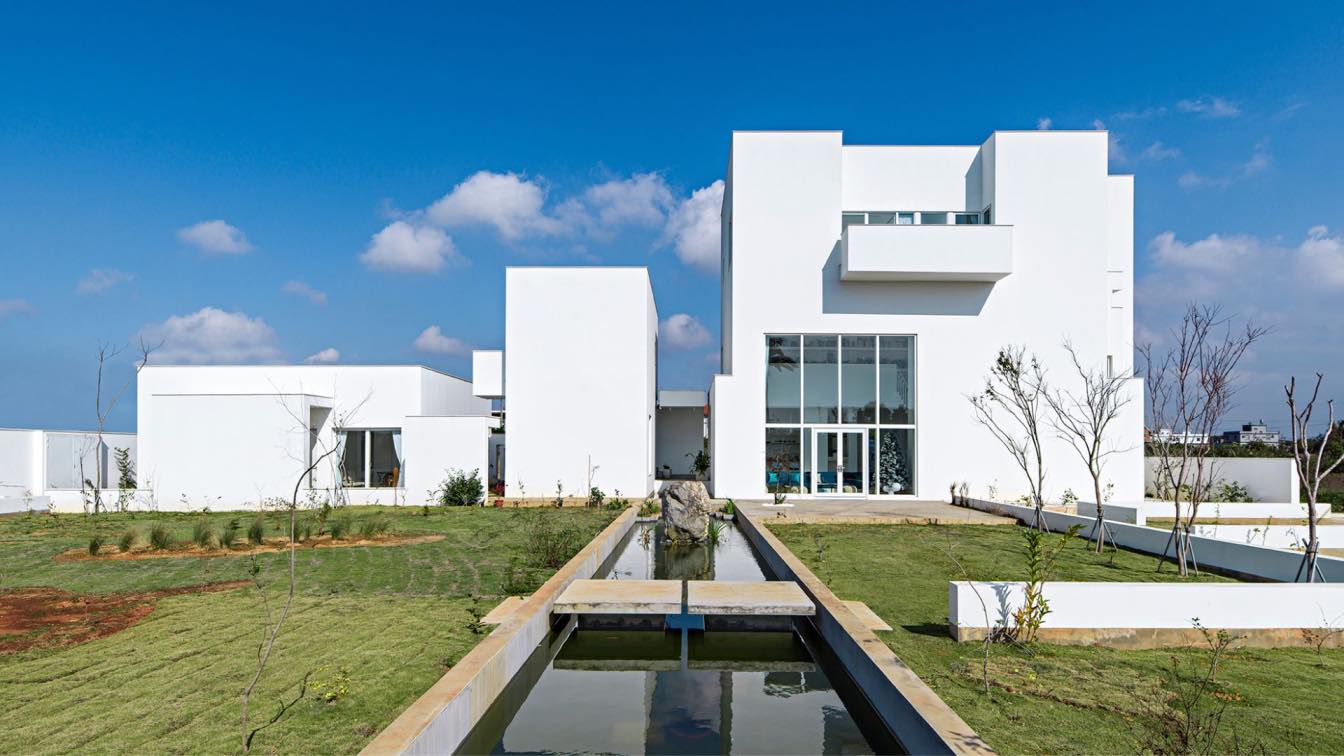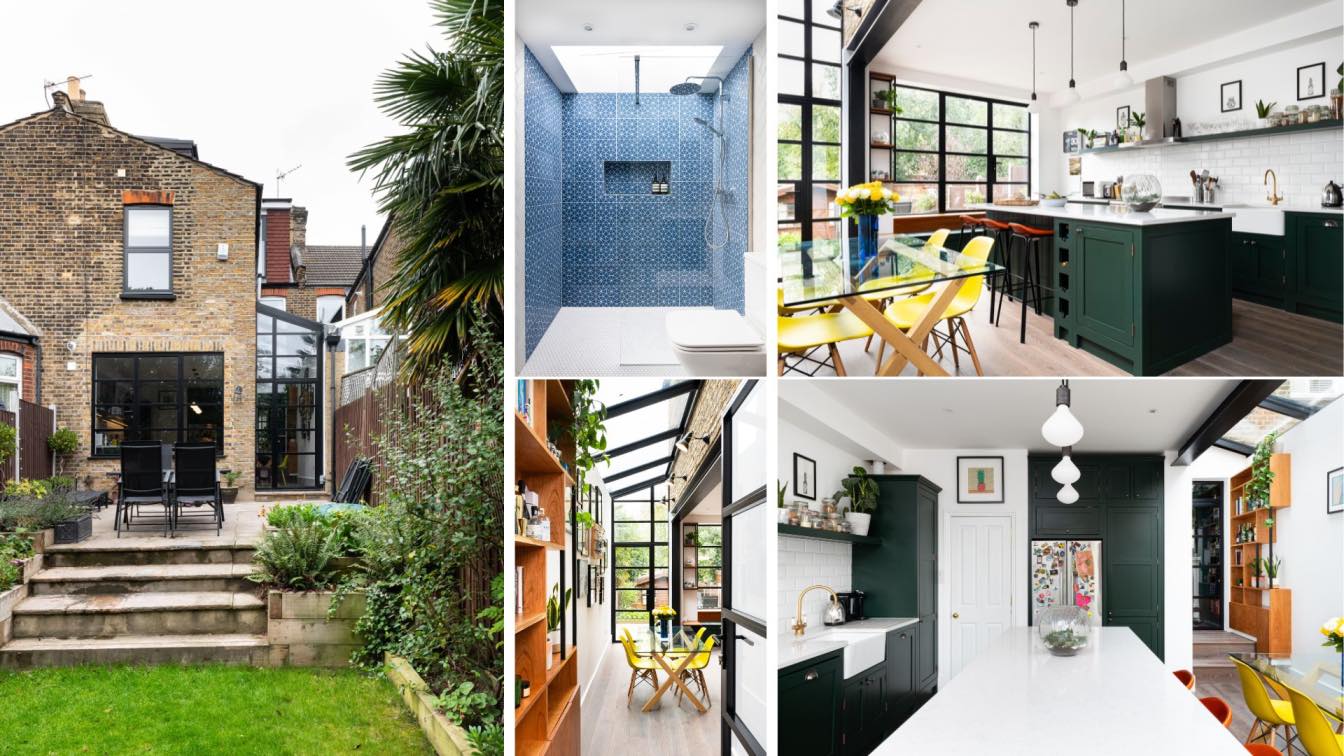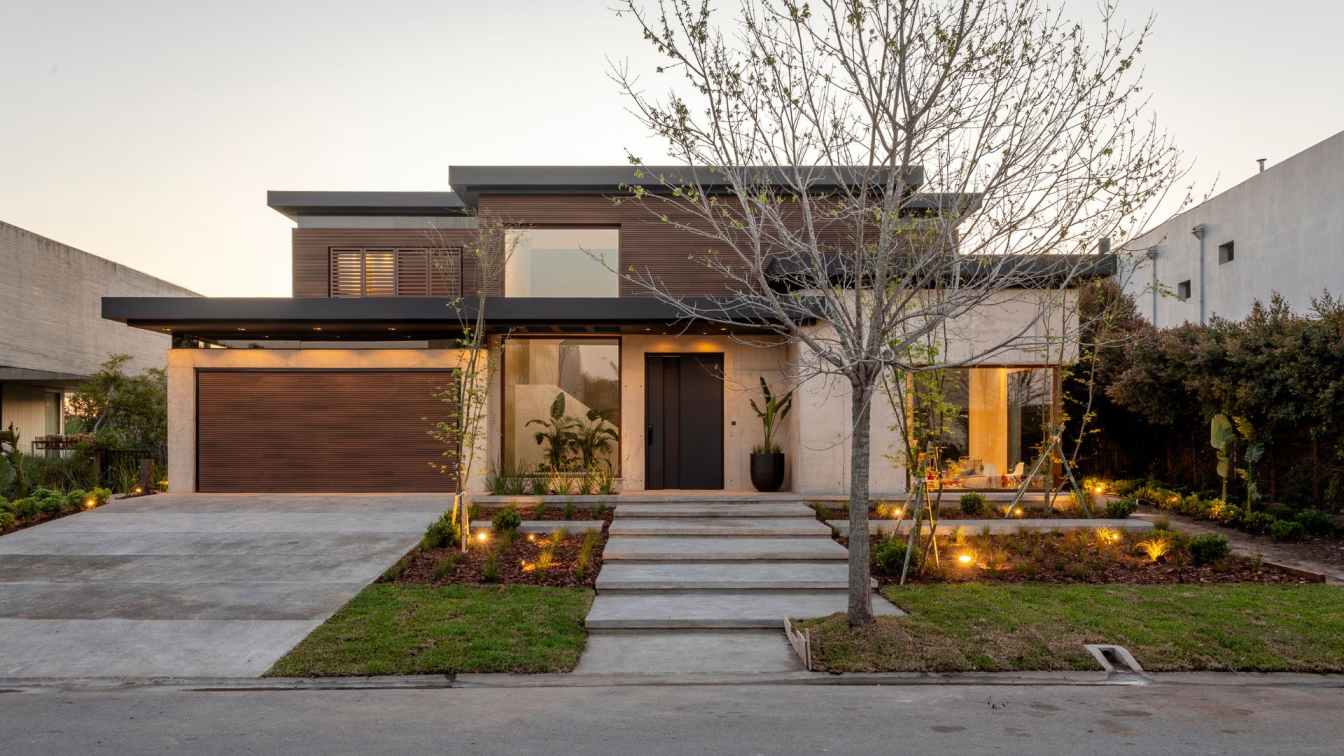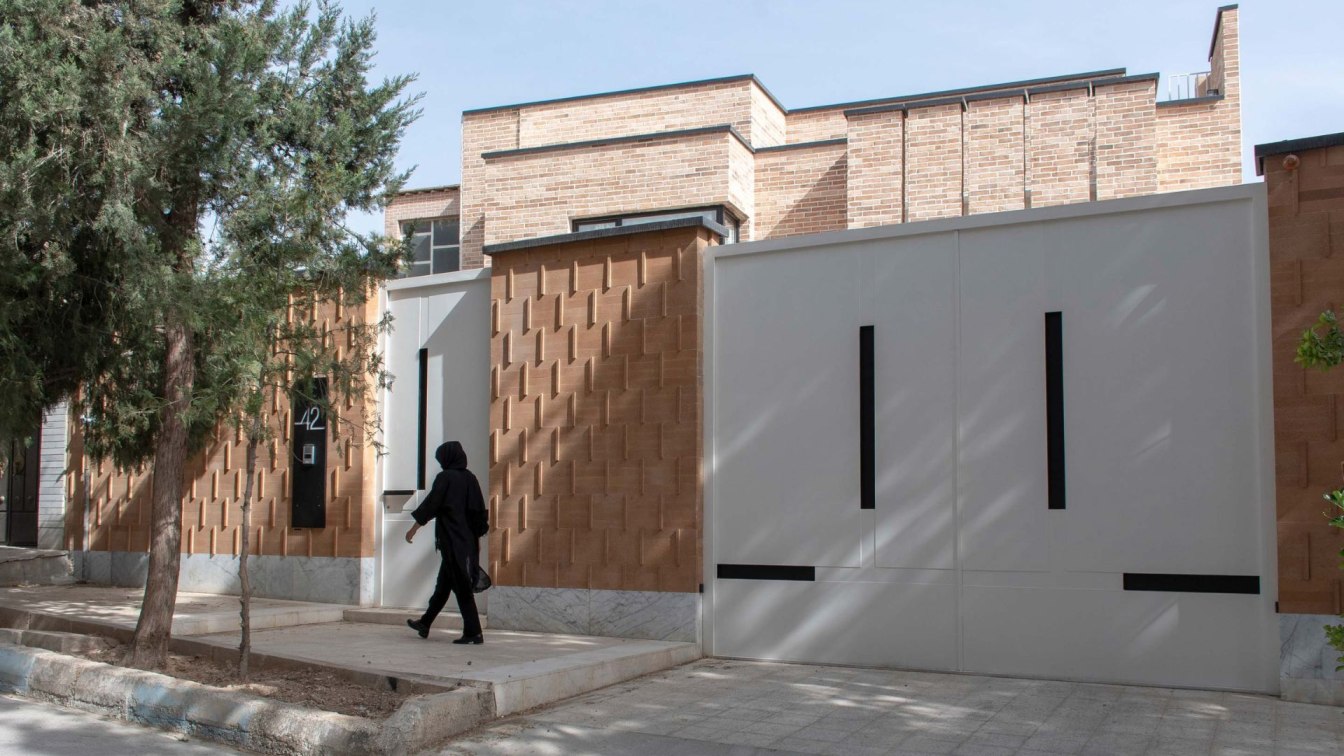Ho + Hou Studio Architects: This house represents a microcosm of contemporary Taiwan. Our client envisions a home for his male friends, female co-workers, and parents. He has requested a design that acknowledges his life-style while accommodating his work relationships and honoring traditional familial obligations. This throws an extremely engaging and complex mix of issues into the design of our house. It contrasts communal and cross-generational living with issues of privacy and gender. This resembles the melting pot of modernity and tradition that has come to be known as Taiwan.
The house is separated into three elemental volumes. The interplay of the volumes responds to the entirety of the site consisting of the house, a garden precinct to the south and an organic farm to the north. Situated on a flat plane, each volume responds to a particular aspect of the client’s program; the three story volume is reserved for himself and two other house-mates; two co-workers occupy the two story volume while his parents live in the single volume as a weekend retreat.
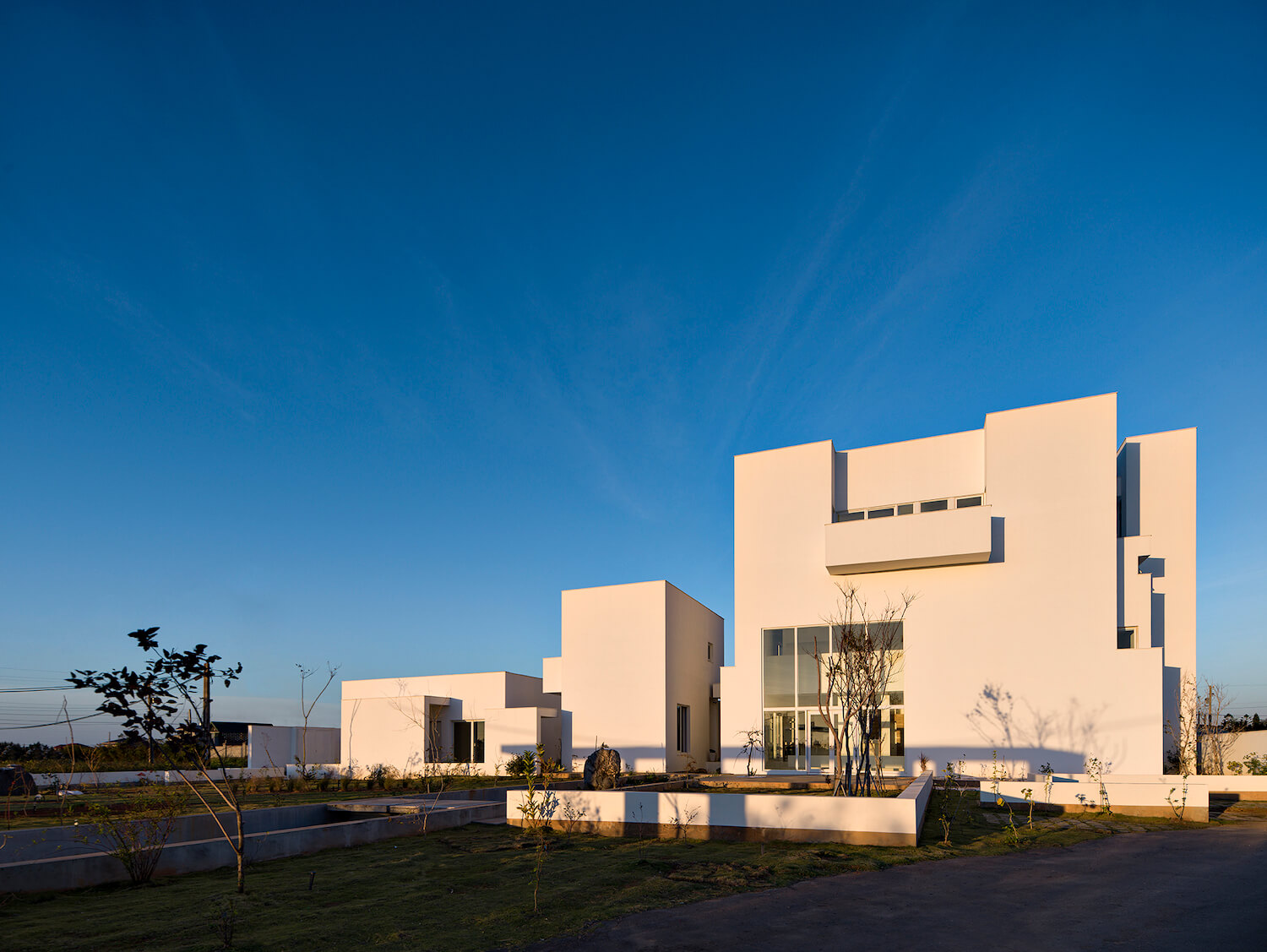
The void spaces between the volumes are conceived as courtyards. Whereas traditional Chinese courtyard houses reinforce a hierarchical and heterosexual family structure, the courtyards here both separate as well as connect the different family members. They are visual and spatial extensions from the interior, forming a syncopated rhythm between voids and solids.
The interior is a contrast between the open and the cavernous. A double height living space in the three story volume is connected to a series of self-enclosed library and display spaces. The color and material palette consist of white paint finished walls and white terrazzo flooring throughout the public spaces.
